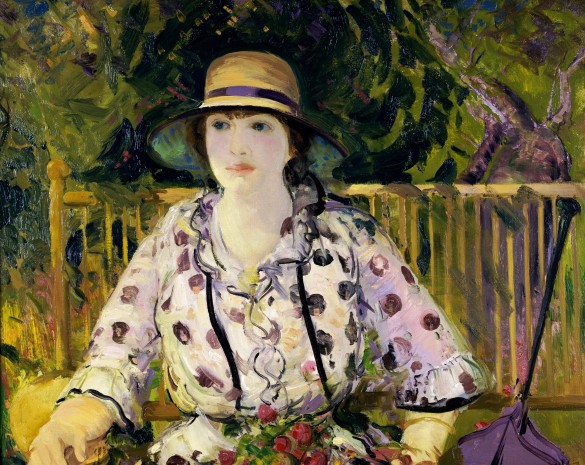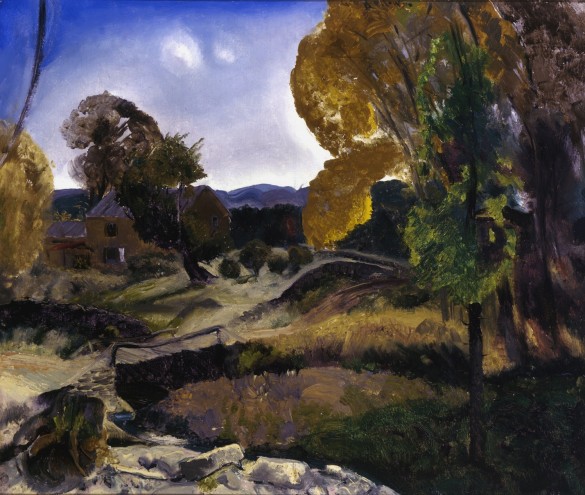Written by Nicole Gaudier, Curatorial Intern
The current exhibit Modern Dialect: American Paintings from the John and Susan Horseman collection, on display in the Mason Gallery until January 5, 2014, contains works made by various artists in the early to mid 20th century. The Cummer Museum of Art & Gardens’ permanent collection also contains works by three of these artists: George Wesley Bellows, William Zorach, and John Steuart Curry.
George Wesley Bellows (1882 – 1925) :
George Wesley Bellows was born and raised in Columbus, Ohio. In 1904, Bellows moved to New York City in order to study painting.
In the city, Bellows quickly established himself as a painter of note, and enjoyed critical and financial success throughout his career for his depictions of boxing matches and scenes of life in New York City. He also painted cityscapes, seascapes, war scenes, and portraits. By 1908, he had come to be associated with the artists known as the Ashcan School.
In 1909, the artist married Emma Story who was a fellow student at the New York School. The couple had two daughters, Anne and Jean, who would later appear in many of the artist’s works.

George Bellows (1882 – 1925), Emma in an Orchard, 1916, oil on canvas, Purchased with funds from The Cummer Council, AP.1980.1.1.
In contrast to the energetic depictions of the city, the paintings that he created during his summers in Maine and Rhode Island depict the bright leisurely days of summer. In Emma in an Orchard, Bellows captures his wife Emma bathed in the summer light of Camden, Maine, a favorite vacation spot of the Bellows family. Emma is the serene focal point while the energetic moment is conveyed in the background.

George Wesley Bellows (1882 – 1925), Little Bridge, Woodstock, 1920, Oil on canvas, Collection of John and Susan Horseman
In June 1920, Bellows and his family made their first extended visit to the burgeoning art colony of Woodstock, New York, in the Catskill Mountains. Bellows was drawn to Woodstock’s sociable community of artists as well as to its rolling hills, mature trees, rustic houses, and winding roads. Little Bridge, Woodstock, from October 1920, conveys an autumn day in a quiet valley near Woodstock. The rickety wooden bridge in the foreground provides the title, but Bellows appears equally enthralled by the chromatic play of complementary yellow foliage and violet shadows.
Little Bridge, Woodstock is currently on display in the Modern Dialect exhibit in the Mason Gallery and Emma in an Orchard is on display in the Lane Gallery.


